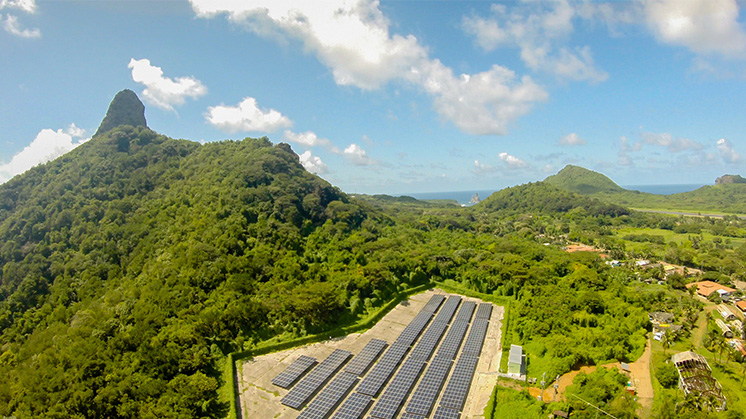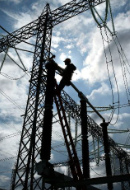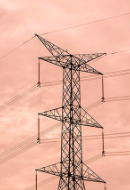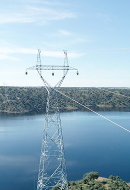Smart micro-grids: the potential for sustainable energy
Microgrids: the solution for sustainable energy supply to small communities
Electrical network Energy efficiency
Microgrids are small circuits that, in a self-sufficient manner, are capable of supplying electricity to specific communities, usually far from large urban centres. In recent years, several countries have seen an increase in the use of this energy system, which has emerged as an alternative to the conventional electricity grid in places where it would be very costly to deploy it.

The transition to a more sustainable future with zero net carbon emissions represents one of the most important challenges we face in the 21st century. Therefore, it is essential to promote the use of renewable energies as an alternative to fossil fuels. In order to monitor this process, electricity grids are a key element. For this reason, there are companies that are committed to microgrids – a revolution in the energy sector that offers sustainable and efficient solutions in places where there are no conventional grids.
It can operate in two different ways: connected to a larger-scale main grid, to which it will provide stability and reliability, providing back-up when needed; or in isolation from other grids, so that it can supply power independently with the help of generators.
It is a local, reduced and strategic system that appears as an alternative to conventional electricity grids in those places where it is not possible to install them due to lack of means. In general terms, a microgrid is a self-sufficient and autonomous grid responsible for supplying electricity to a specific area that is normally outside the main grid. It is especially effective in areas far from urban centres, a community of neighbours or a hospital complex.
In a context of energy transition, the concept of microgrids has gained particular attention due to their flexibility in optimising electricity consumption by harnessing renewable energy sources and using energy storage systems. Normally, the system is powered by renewable energy sources, such as solar and wind, and they make it easier for electricity to reach those corners of the planet where conventional grids cannot be installed due to the high cost.
Microgrid systems do not always work with renewable energies; sometimes they use generators or other polluting means. At Iberdrola, we are committed to clean microgrids, as in addition to not polluting, they do not need to be refuelled from time to time. This is something to consider in remote locations, where fuel becomes more expensive due to the additional cost of transporting it there.
In a microgrid system that uses the sun's energy, for example, panels generate electricity from the sun's rays during the day and, at the same time, store energy in batteries for use in times when there is no natural light. In fact, the battery storage built into the microgrids ensures continuity of power supply in the event of breakdowns or maintenance situations – creating what are known as "electricity islands".
 SEE INFOGRAPHIC: How do microgrids work? [PDF]
SEE INFOGRAPHIC: How do microgrids work? [PDF]
Microgrids are an attractive solution for energy markets in emerging countries where there is no electricity infrastructure, no economic capacity to make the necessary investments to have one, and many communities are located far from large cities or the central grid.
In January 2023, Iberdrola inaugurated the first microgrid in Brazil with fully sustainable energy. Through the 'Light for all' project, we ensured the electricity supply to the community of Xique-Xique, located in the municipality of Remanso (Bahia), with the installation of a system that works with solar energy and battery storage. The capacity of the microgrid developed by Neoenergia, our subsidiary in Brazil, guarantees an average energy consumption of 80kWh to over 103 homes – benefiting around 400 people living in the community.
In Spain, we are also implementing some microgrid initiatives that operate independently using batteries connected to the grid. The installation of energy storage systems has been completed in San Agustín de Guadalix, El Hornico and Caravaca, and will soon be completed in Rascafría and Valcarlos. The main purpose of these batteries is to provide service to neighbouring communities in the event of power supply failures, establishing a small-scale electricity grid in each of these areas.

Progress on the smart grid
Telecommunications trends and applications in the smart grid.

Electrical substations
Find out what electrical substations are and how they work.

The road to smart grids
A global transition to a green grid powered by renewables.

High, medium and low voltage
Discover their different peculiarities and uses.
Benefits and operation of micro-grids
There are several reasons why microgrids can be an effective alternative power supply to a specific geographic location. Some of the main benefits are:
 Delivers quality power in remote or off-grid locations
Delivers quality power in remote or off-grid locations
One of the main advantages of microgrids is the possibility of supplying constant, high quality power to a given locality, which is often located far away from large urban centres, such as rural areas. Unlike transmission lines.
 Boosts renewable energies
Boosts renewable energies
A large part of the microgrids distribute electricity coming from renewable energy sources such as solar panels or wind turbines. In doing so, they ensure the incorporation of more renewable technology and position themselves as a key pillar of the energy transition.
 Brings economic and social benefits
Brings economic and social benefits
Microgrids can be a way to activate the economy of a small community, both by creating direct jobs and by supplying energy to homes, hospitals or commercial establishments. It can also bring electricity to people who do not have access to this energy source.
 Resilience to network incidents
Resilience to network incidents
Grid disturbances caused by incidents, whether due to weather, equipment failures or voltage variations, do not affect users connected to the microgrids.
The sustainable energy future with smart microgrids
The commitment to a decarbonised society is everyone's task. The energy transition involves a commitment to the electrification of the economy, the promotion of green energies and technological innovation to guarantee a greener future for future generations. Electricity grids are fundamental in this process, and microgrids are also playing a key role in remote areas that are not connected to conventional grids.
Microgrids promise to be a cheap, accessible and sustainable solution where conventional grids are not available – with an eye on a future that demands the use of renewable energy to ensure supply for all.















